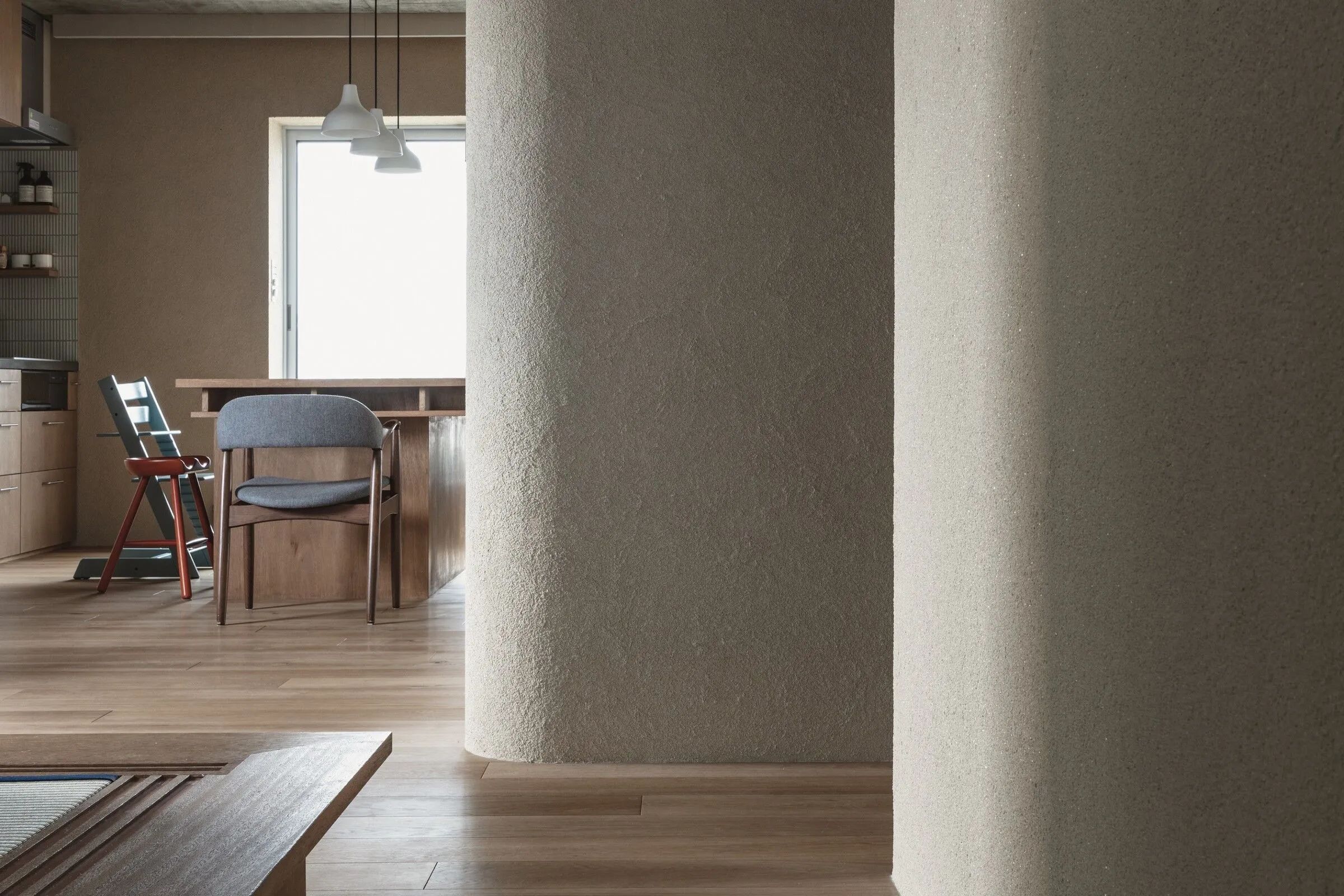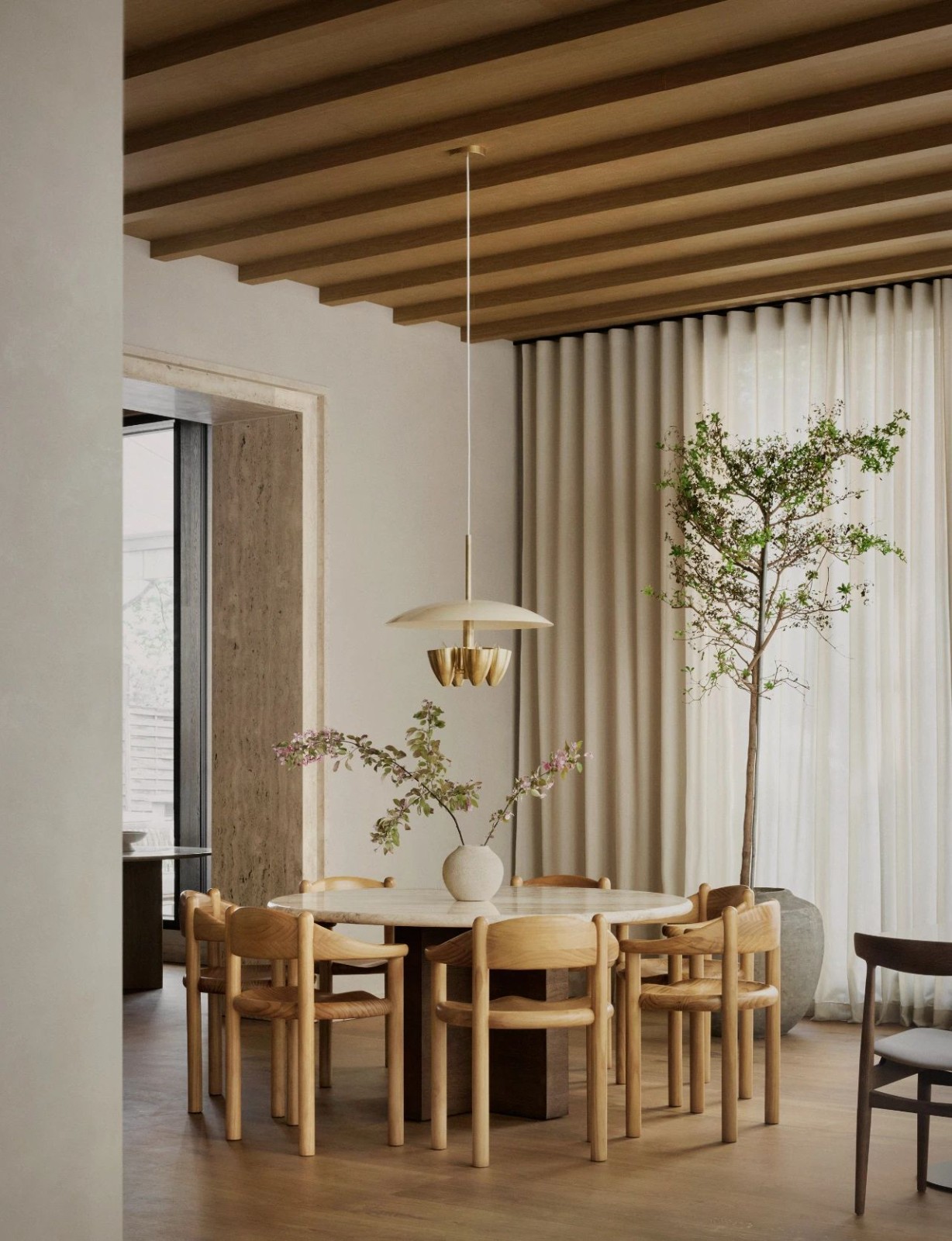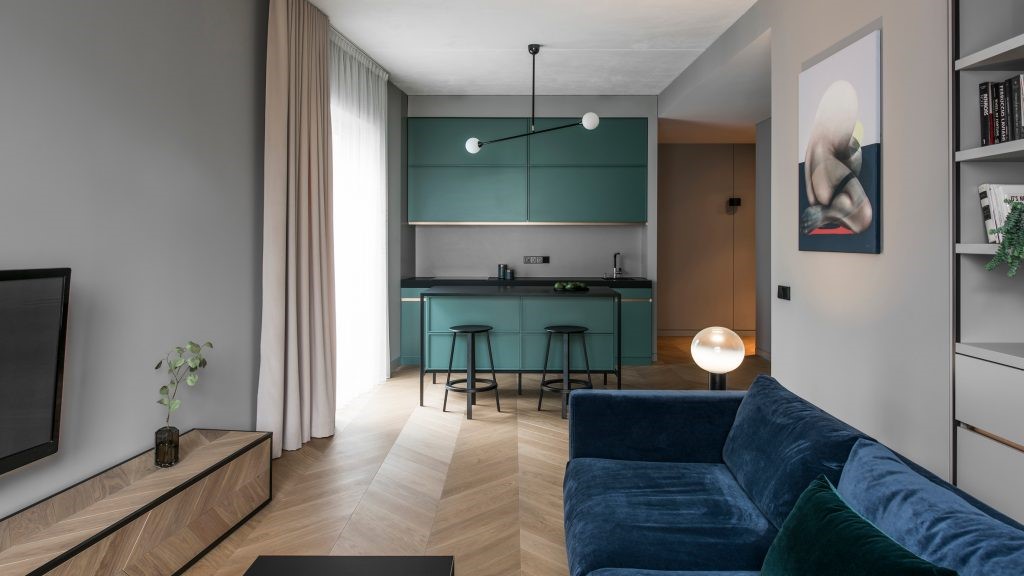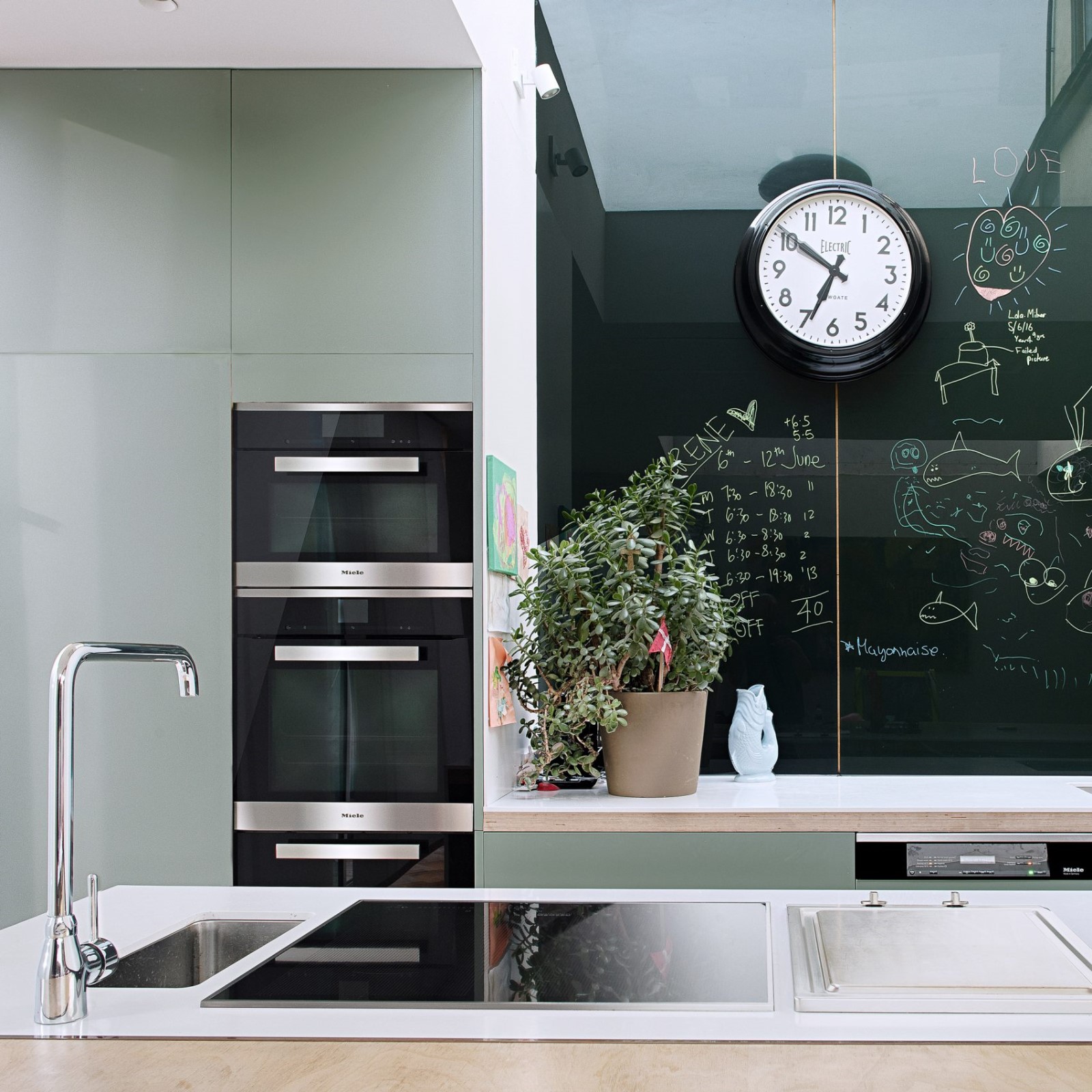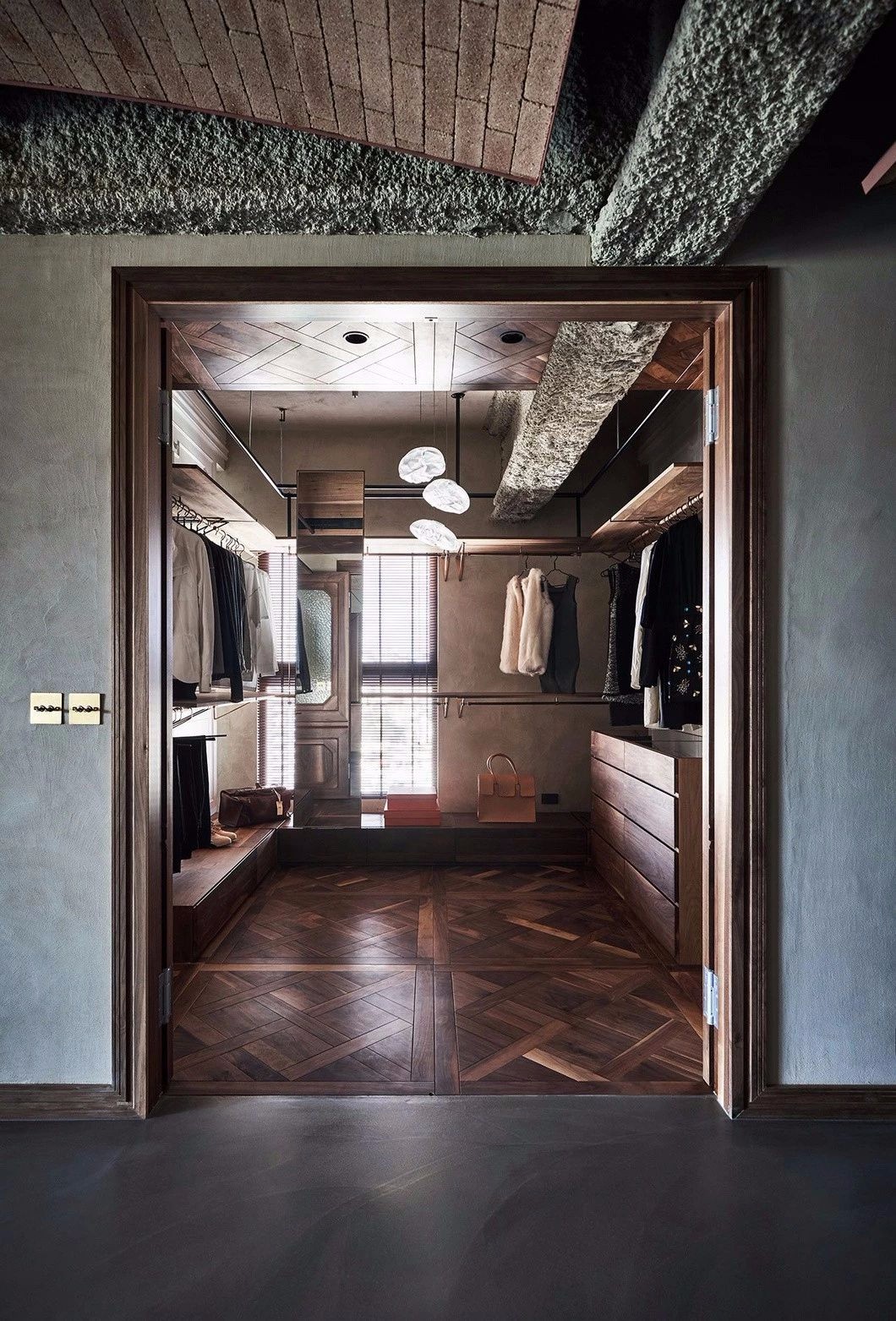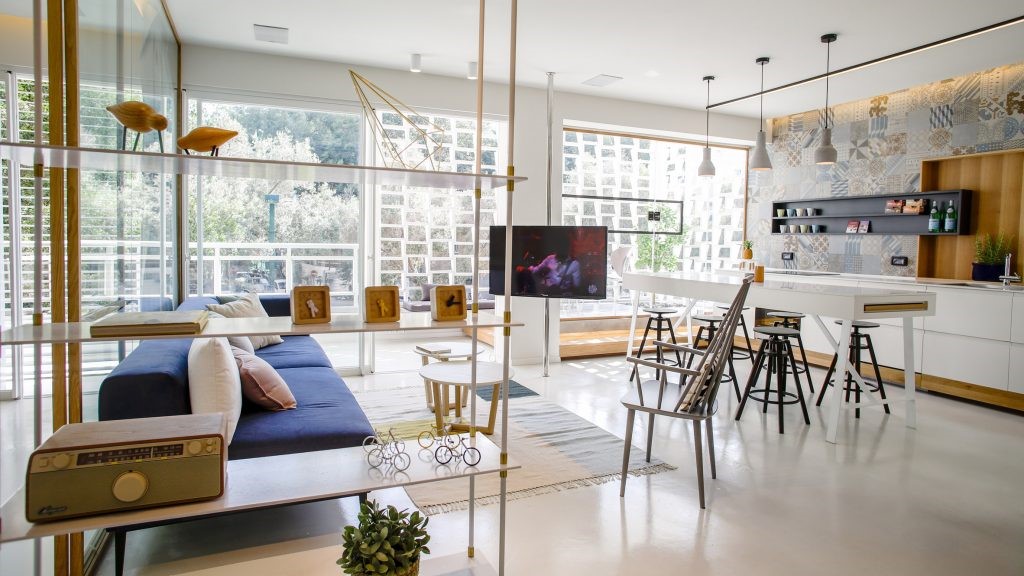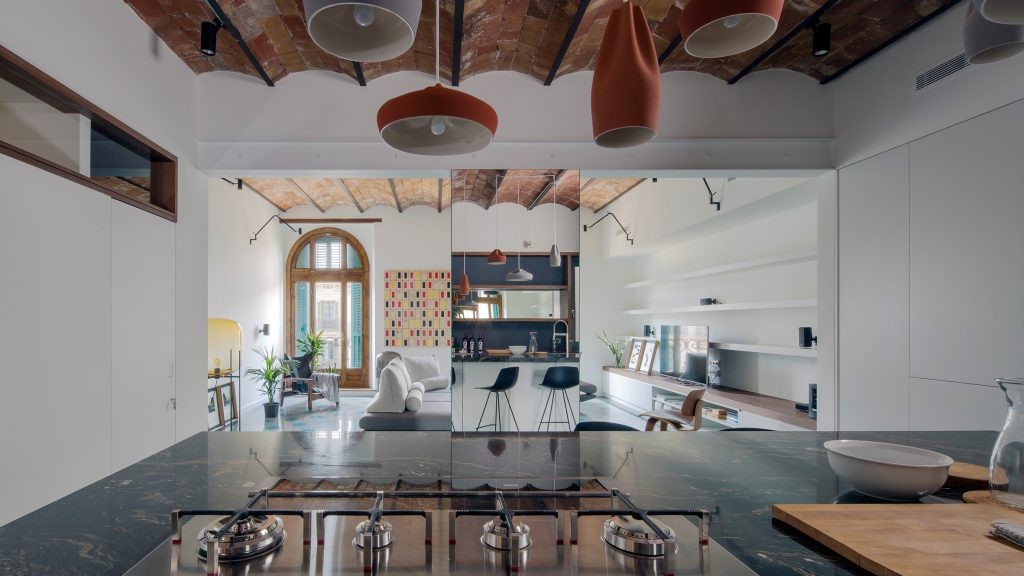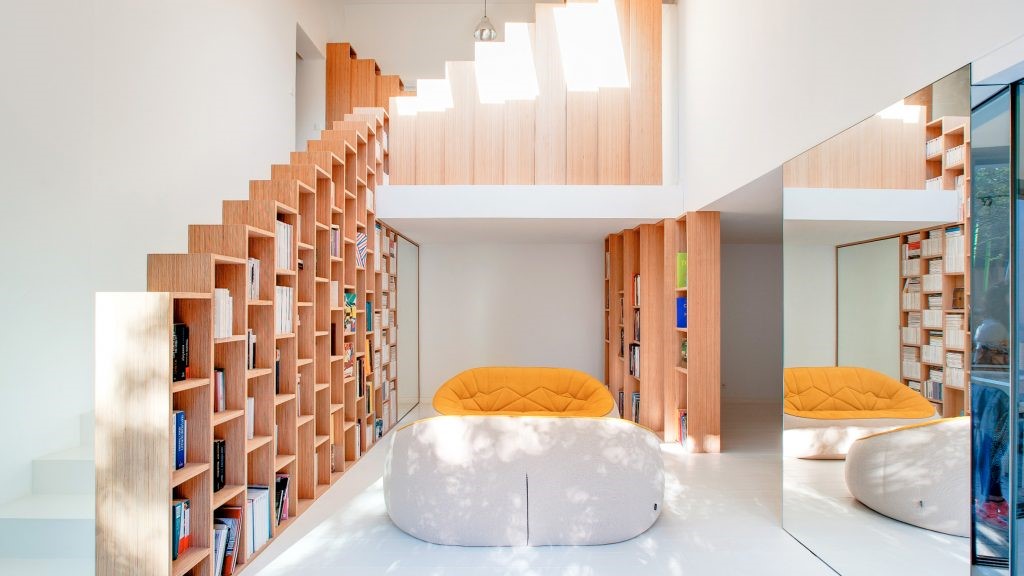Ichijo Toma,东京目黑区 纸石藏韵,返璞归心
2025-07-24 14:41
In the streets of Meguro District, Tokyo, Ichijo-Toma House is like a silent craftsman, weaving a poetic life against the monotony of the city with the simplicity of diatomaceous earth, the tranquility of cobblestones and the ethereality of Japanese paper. Kooo architects uses traditional Japanese aesthetics as its core and the warmth of handcraft as its soul, making this house a container of creativity and warmth - here, every ray of light refraction and every touch of fingertips are telling the true meaning of home.
在东京目黑区的街巷间,Ichijo-Toma 住宅如一位静默的匠人,用硅藻土的质朴、鹅卵石的沉静与和纸的空灵,编织出一场对抗都市单调的生活诗学。kooo architects 以传统日式美学为骨,以手工温度为魂,让这座房子成为承载创造力与温情的容器 —— 在这里,每一缕光线的折射,每一次指尖的触碰,都在诉说着关于 “家” 的本真意义。
The walls along the street are covered with a layer of diatomaceous earth. The light grey texture is like a river beach washed by rain, with subtle undulations of hand-painted. This traditional Japanese material contains the wisdom of nature. It absorbs water vapor when wet and releases moisture when dry, allowing the house to breathe freely like skin. The morning dew will leave light water marks on the wall, the midday sun will make the surface glow with a matte luster, and the evening twilight will coat it with a layer of soft gray-blue.
沿街的墙面覆着一层硅藻土,浅灰色的肌理像被雨水冲刷过的河滩,带着手工涂抹的细微起伏。这种源自日本传统的材质藏着自然的智慧,潮湿时吸附水汽,干燥时释放润泽,让房子像皮肤般自由呼吸。清晨的露水会在墙面留下淡淡的水痕,正午的阳光让表面泛出哑光的光泽,傍晚的暮色又为其镀上一层柔和的灰蓝。
Touching the wall, you can feel the texture of the particles, as if you can hold a handful of mountain soil. This breathing skin not only isolates the hustle and bustle of the city, but also echoes the philosophy of coexistence with nature in Japanese aesthetics - just like the townhouse architecture of the Edo period, which always maintains a dialogue with the world in the midst of prosperity. Occasionally, when children pass by, they cant help but reach out and touch the uneven lines. The warmth of their fingertips seems to awaken the sleeping time in the material.
触摸墙面,能感受到颗粒的质感,仿佛能攥住一把山间的泥土。这层 “会呼吸的表皮” 不仅隔绝了都市的喧嚣,更呼应着日式美学中 “与自然共生” 的哲思 —— 就像江户时代的町家建筑,在繁华中始终保持与天地的对话。偶有孩童路过,会忍不住伸手抚摸那些凹凸的纹路,指尖的温度仿佛能唤醒材质里沉睡的时光。
As you enter the entrance, you will feel the cool touch of the pebbles under your feet. These round stones have not been deliberately polished, retaining the original contours of the river. When you step on them barefoot, the granular feeling spreads from the soles of your feet to your whole body, like a gentle foot massage. The gaps between the stones hide tiny shadows, which are the skylight that penetrates through the Japanese paper door, creating flowing patterns on the ground.
踏入入口,脚下的鹅卵石便传来微凉的触感。这些圆润的石子未经刻意打磨,保留着河流冲刷的原始轮廓,赤足踩过时,颗粒感从脚底蔓延至全身,像在进行一场温柔的足底按摩。石子间的缝隙藏着细碎的光影,那是从和纸门透进来的天光,在地面拼出流动的图案。
There is no extra decoration in the entrance hall. A low cabinet stands against the diatomaceous earth wall. The wood grain of the cabinet and the texture of the wall form a material dialogue. The hostess took off her high heels and stepped on the stones barefoot. The fatigue of the day seemed to flow away through the gaps in the stones. This is the first threshold of home. The simplest materials remind everyone who returns: let go of the troubles of the outside world and return to the true nature of life.
玄关没有多余的装饰,一面矮柜贴着硅藻土墙而立,柜面的木纹与墙面的肌理形成材质的对话。女主人脱下高跟鞋,赤脚踩在石子上,一天的疲惫仿佛顺着石子的缝隙流走。这里是家的第一道门槛,用最朴素的材质提醒着每一个归来的人:放下外界的纷扰,回归生活的本真。
The sliding door is an invisible boundary of the space, and the texture of Japanese paper gives the light a gentle shape. During the day, the sunlight shines through the paper door, casting the shadow of the wooden grid on the ground, like a simple drawing outlined with ink lines; at night, the indoor light seeps through the paper door, dyeing the whole room into a hazy lantern. When the door is pushed, the wooden track will make a slight creaking sound, which is the sound of time passing.
滑动门是空间的隐形边界,和纸的肌理让光线有了温柔的形状。白天,阳光透过纸门,在地面投下木格的影子,像用墨线勾勒的简笔画;夜晚,室内的灯光从纸门渗出,将整个房间晕染成一盏朦胧的灯笼。推动门时,木质轨道会发出 “吱呀” 的轻响,那是时光走过的声音。
The most ingenious thing is the Japanese paper door between the living room and the study. When closed, the study is a quiet place for reading. When the male owner writes here, the paper door can isolate the noise from the outside world; when opened, the two spaces merge into one, and the laughter of the children playing in the living room will gently spread into the study without disturbing the concentration of writing. The translucent nature of Japanese paper allows the space to remain independent while implicitly connected - just like the way of getting along in a Japanese family, harmony in difference, intimate but not restrained.
客厅与书房之间的和纸门最具巧思。闭合时,书房是静谧的阅读天地,男主人在这里挥毫时,纸门能隔绝外界的杂音;打开时,两个空间融为一体,孩子们在客厅嬉闹的笑声会轻轻漫进书房,却不打扰书写的专注。和纸的半透明特性让空间既保持独立,又暗含联系 —— 就像日式家庭中 “和而不同” 的相处之道,亲密却不束缚。
The designer deliberately reduced the number of rooms and replaced the rigid partitions with flexible layouts. There is no clear boundary between the living room and dining room in the public area. A low table can be used for dining, painting, or sitting around and chatting. This blank design gives the space unlimited possibilities, just like the enga in traditional Japanese houses, blurring the boundaries between indoors and outdoors, and also blurring the established framework of life.
设计师刻意减少了房间的数量,用灵活的布局替代刻板的分区。公共区域没有明确的 “客厅”“餐厅” 界限,一张矮桌既可用来用餐,也能铺展宣纸作画,或是围坐畅谈。这种 “留白” 的设计,让空间有了无限的可能性,就像传统日式住宅中的 “缘侧”,模糊了室内外的边界,也模糊了生活的既定框架。
The lighting design was done by DAISUKI LIGHT. Hidden light strips shine through the gaps in the diatomaceous earth wall, illuminating the texture of the cobblestone floor without being glaring. At dusk, the light and the shadow of the Japanese paper door interweave, and the whole room feels like it is immersed in a light tea soup, warm and peaceful. The family sits around the table, with thousands of lights in Tokyo outside the window, and the room is their own world, where the warmth of the material and the warmth of family affection blend together.
灯光设计由 DAISUKI LIGHT 操刀,隐藏式灯带从硅藻土墙的缝隙中透出,照亮鹅卵石地面的纹路,却不刺眼。黄昏时分,灯光与和纸门的光影交织,整个房间像浸在淡淡的茶汤里,温暖而安宁。一家人围坐桌前,窗外是东京的万家灯火,室内是属于他们的一方天地,材质的温度与亲情的暖意在此交融。
Each material of Ichijo-Toma carries the genes of Japanese culture. Diatomaceous earth is a modern interpretation of the wabi-sabi aesthetics, accepting imperfections and embracing the traces of time; pebbles echo the sentiment of mono no aware, seeing the beauty of nature in the details; Japanese paper continues the artistic conception of mystery, hiding endless imagination in the haziness. The designer did not replicate the form of traditional architecture, but extracted the spiritual core of the material, allowing the ancient wisdom to be reborn in contemporary life.
Ichijo-Toma 的每一种材质都承载着日本文化的基因。硅藻土是对 “侘寂” 美学的现代诠释,接受不完美,拥抱时光的痕迹;鹅卵石呼应着 “物哀” 的情愫,于细微处见自然之美;和纸则延续着 “幽玄” 的意境,在朦胧中藏着无尽的想象。设计师没有复刻传统建筑的形制,而是提取材质中的精神内核,让古老的智慧在当代生活中重生。
This reminds me of my childhood at my grandmothers house in Kyoto: walking barefoot on the cool tatami in the summer, watching the sun dancing on the floor through the shoji doors, and my grandmother would wipe the walls with diatomaceous earth powder, saying this way the house wont get sick. Ichijo-Toma recreates these memories in a modern language, making tradition not a specimen in a museum, but a life partner that can be touched, felt, and integrated into daily life.
这让我想起童年时在京都外婆家的日子:夏天光着脚踩在冰凉的榻榻米上,看阳光透过障子门在地板上跳舞,外婆会用硅藻土的粉末擦拭墙面,说 “这样房子才不会生病”。Ichijo-Toma 用现代的语言重现了这些记忆,让传统不是博物馆里的标本,而是能触摸、能感知、能融入日常的生活伙伴。
Today, when urbanites are trapped in standardized apartments, Ichijo-Toma is like an antidote, using the warmth of handwork to fight against mechanical reproduction and natural materials to awaken numb senses. Here, materials are no longer cold building materials, but have life, memory, and emotions. They witness the laughter and contemplation of a family, record the passage of time, and finally become the warmest footnote to home.
如今,当都市人被标准化的公寓困住,Ichijo-Toma 像一剂解药,用手工的温度对抗机械的复制,用自然的材质唤醒麻木的感官。在这里,材质不再是冰冷的建材,而是有生命、有记忆、有情感的存在 —— 它们见证着一家人的欢笑与沉思,记录着时光的流逝与沉淀,最终成为 “家” 最温暖的注脚。
采集分享
 举报
举报
别默默的看了,快登录帮我评论一下吧!:)
注册
登录
更多评论
相关文章
-
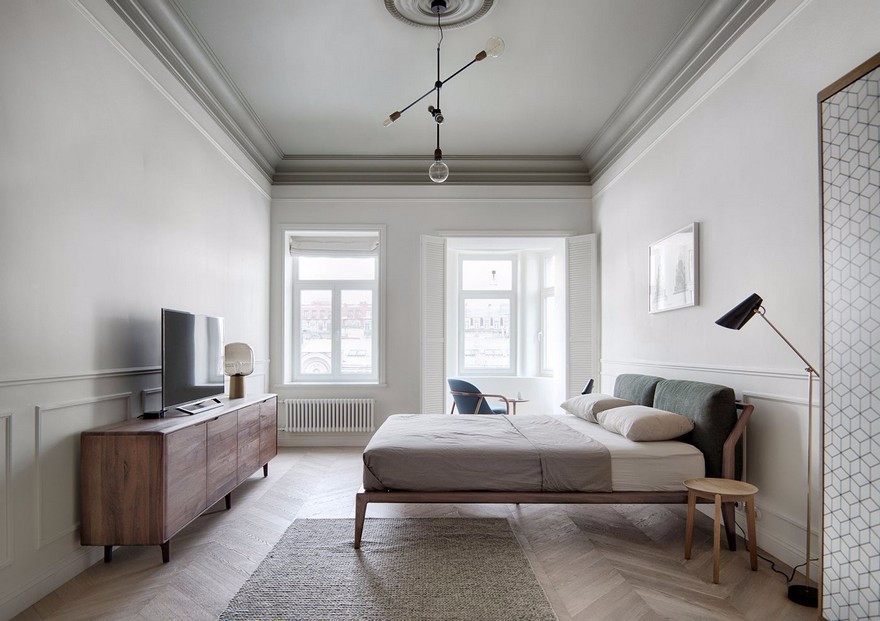
描边风设计中,最容易犯的8种问题分析
2018年走过了四分之一,LOGO设计趋势也清晰了LOGO设计
-

描边风设计中,最容易犯的8种问题分析
2018年走过了四分之一,LOGO设计趋势也清晰了LOGO设计
-

描边风设计中,最容易犯的8种问题分析
2018年走过了四分之一,LOGO设计趋势也清晰了LOGO设计



















































































